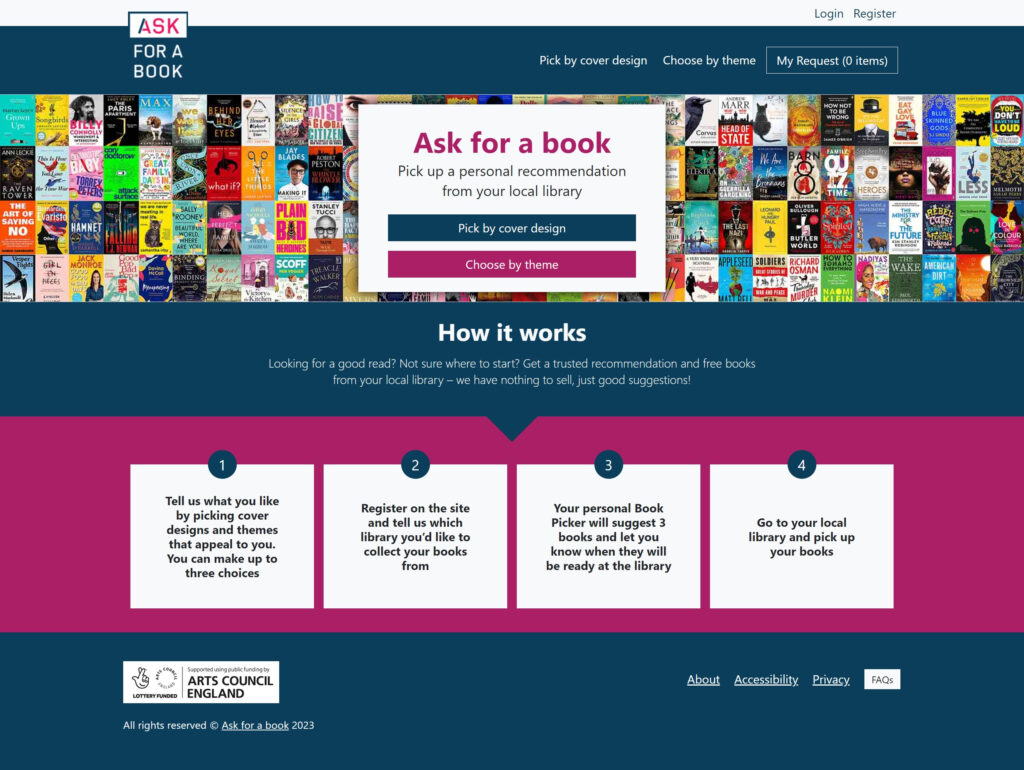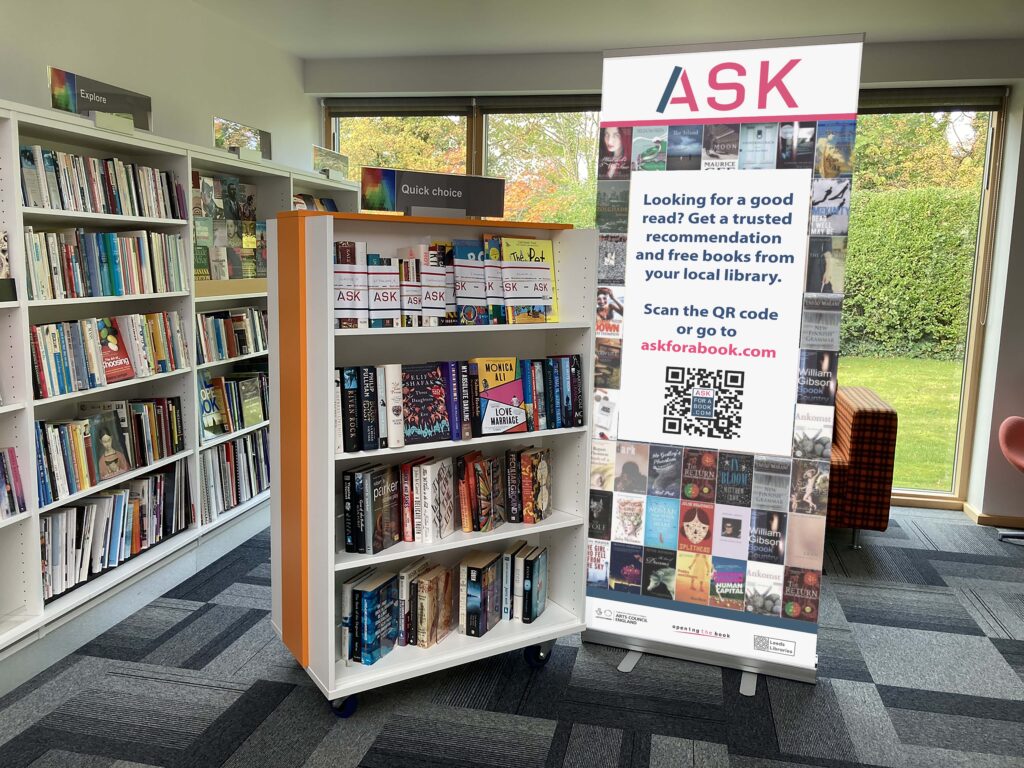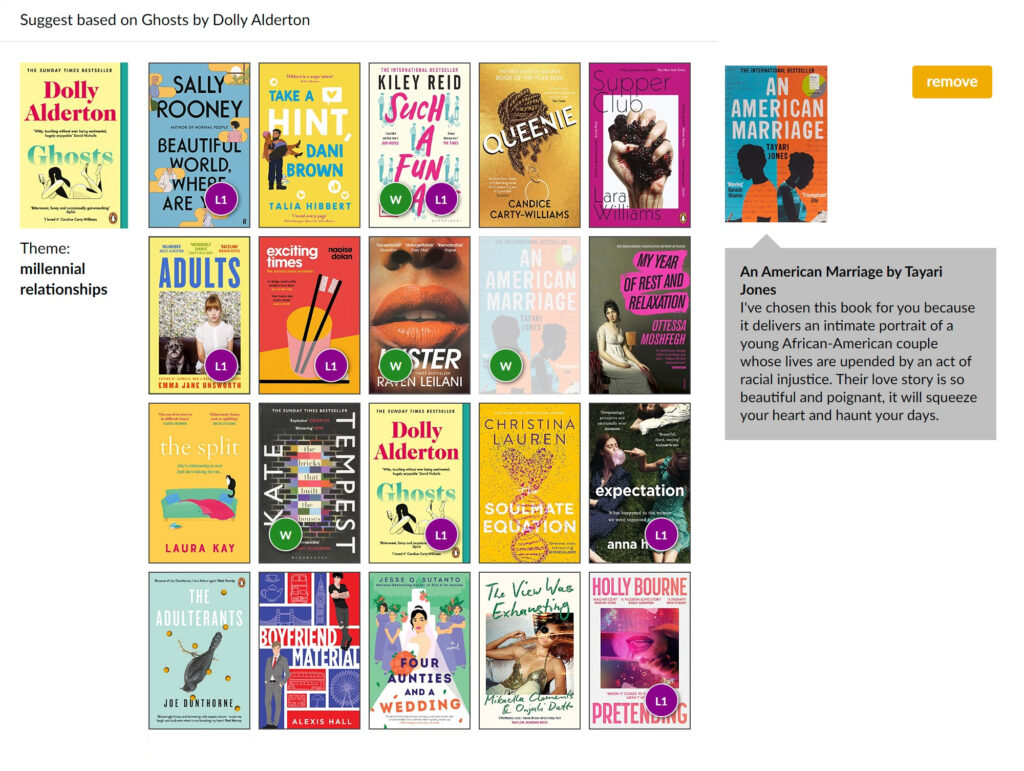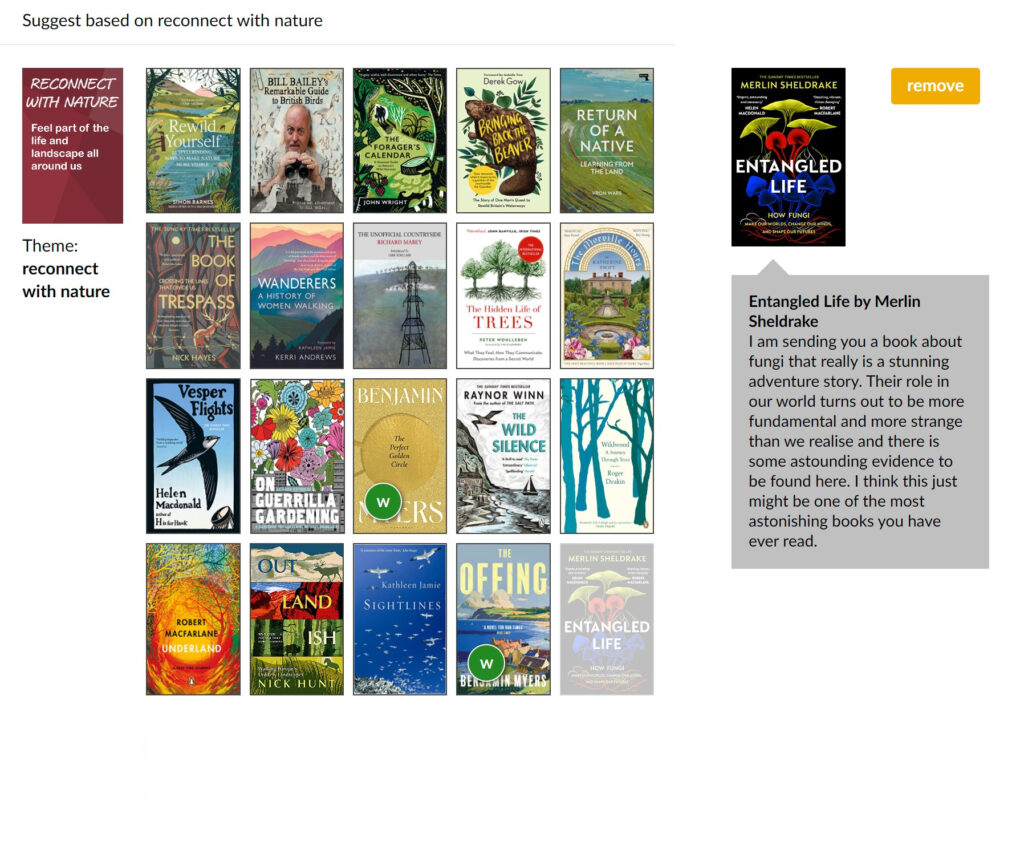Interview: Rachel Van Riel and Ask For A Book
Libraries across the UK are currently piloting a new service where readers get personal book recommendations. Some ingenious, user-focused tech makes this practical for time-limited library staff. But it also depends on expert human curation, drawing on decades of experience in how people choose what to read.
Rachel Van Riel, director of creative agency Opening the Book tells Infotec.news about it…
What does AskForABook.com do?
We’re a personnel recommendation service working through public libraries. You register for free on the site. You then have two options: pick by cover design or choose by theme. The site presents you with some simple options for the kinds of book that might be of interest. You make your choices. You then receive an email with a personal recommendation for books we think you’ll enjoy and you can pick them up at your local library. It’s about finding great books you didn’t know existed.

Homepage of AskForABook.com
When I buy a book online, I often get recommendations — ‘Here’s something else a bit like what you just bought’, or ‘Other people who bought that book also bought this…’ How is Ask for a Book different?
It comes down to the USP of public libraries – their rich backstock and the way readers trust them as neutrals in the book world. The commercial pressures in the publishing world support new books and books that are selling well. Public libraries are very different. They can’t buy lots of copies of the latest bestseller to satisfy demand because that uses up all of their budget. They also have older books and less well-known titles that are often just as good as the bestsellers.
You also often find that recommendations you get elsewhere focus on what you’ve liked before to give you more of the same – books by the same author, or in the same genre. If you liked a particular crime novel, they might recommend 10 more crime novels. That clearly works, so long as you want something like you had previously.
Libraries are in a unique position to encourage people to expand their reading because you can take risks without it costing lots of money. We aim to open up choice and to cross genres by focusing not on what you’ve already read but on what you might be willing to try next.
It says on your site that this came out of lockdown, when libraries had to shut down.
They didn’t shut down – staff were still working. But libraries closed to the public, so readers couldn’t come in to browse the shelves. Libraries offered a ‘click and collect’ service where the staff chose the books and readers collected a bag of three or four books from a table the entrance. It turned out a lot of people really liked the personal recommendation, that encouragement to try something new. If people trust you, they’ll try things. In fact, there was a demand after lockdown to continue.
Why have a website for such a personal service?
Librarians are able to make recommendations and be creative about the choices, but they lack the time to build one-to-one relationships with readers to find out what books they might like. They needed a shared, automated system that still feels personal, and has aspects of the personal in it, but works quickly and efficiently enough to be practical.
So that’s where you came in.
Opening the Book has particular skills in tech and in reader engagement. We’ve made lots of reader-centred websites over the years and we knew a lot about how to engage people. We’ve run WhichBook.net for 20 years, which gets more than 40,000 users per month and offers a choice of books, based on factors like mood and emotion or the country the book is set in.
When we started that site, the algorithm it runs on was very sophisticated and worth a lot of money. What’s interesting is how that has changed. Algorithms are now ten-a-penny and it’s the database we’ve created that matters. All the books on the site have been read and assessed by our trained readers, who score the books for things like levels of violence out of 10, using benchmarks we’ve agreed. The expert, human analysis is what provides the value. That’s something we brought to Ask for a Book.
By drawing on the expertise of library staff.
Yes, and also developing that expertise. In the past 10 or 15 years, a lot of the work done by librarians has changed. They’ve taken on a number of important roles but there’s perhaps not been as much support and training involving actual books. Our project appealed to a lot of libraries because it gets back to that, and encouraged enthusiasm and creativity around their stock of books.
The training involves people who work with book stock alongside project managers and audience development staff, plus the frontline staff who deliver the service. We can offer training and professional development right across the service.
Who paid for the project?
Arts Council England provided the funding, with the libraries managing governance to ensure that public funds were well used. Once the system has been set up, libraries will have the time and skills to deliver and sustain it.
How did you choose the libraries to work with, and how did you work with them?
We sent out open invitations to participate through Libraries Connected’s regional networks of heads of service and I did online presentations across library networks. People expressed interest, came on webinars and I talked through our idea.
From that, we got 15 library services to join us for the two-year pilot. That’s 10% of all the local authorities in the country, and the 15 are each very different. That’s important because we’re trying to create something universal. We have different types and sizes of library service, from different parts of the country. We’ve got London boroughs, rural counties, and some big cities. Our smallest service is responsible for eight libraries all within a mile of each other, our largest has 65 libraries. We’ve worked with them to understand how they differ, who does what, how much time they might have. But to actually make this work we needed to run a pilot and test it.
We spent time playing with different models. The system needed a database behind it that could match to a library’s stock system — and they all have different systems and processes. That was really challenging. My team of three created the initial database of around 1,000 books. Then we’ve been training librarians to take this on.
What do you train librarians to do?
There are two key roles. A ‘book curator’ manages the books on the database. They check which of the books they’ve got in stock and see if they need to buy more. We also train them to review books and curate collections.
Then we have ‘book pickers’ who fulfil the requests that come in from readers. The back-end of our site uses the database to present a shortlist of recommendations. The book picker makes a selection from this, checking availability against their own library management system. They should have the book in stock because that’s been set up already, but it might have been checked out or sometimes books get lost. If it’s available, they check the boxes on our site and it auto-generates the email to send the reader: ‘This is what we recommend and have ready for you in the library.’
There’s a box to add a personal message, which some libraries use all the time and others never do. The book picker sends the email and then organizes moving the recommended books physically from whichever branch they are in to the library the user has chosen to collect them from.
But your site isn’t integrated into existing systems.
Library management systems were digitised very early on, which was great. But it means we can be dealing with hefty, antiquated systems. We’ve made it easy to use our system in tandem so that any member of staff in the service — which might comprise 300 people — can fulfil a recommendation as easily as any other request.
The big thing we’ve found by running the pilot is that different libraries do things in different ways. Some of them have a book picker per library, others have a team. Coventry decided to roll out the pilot to all its libraries in one go, while in Lancashire they started with just one. They each control that, down to how many staff could be trained at once and how many books would be needed.
You’re saying that to be able to build a website for a business, you have to understand every part of that business.
That’s so true. For example, one important thing came from being in the libraries and seeing where the recommended books would be put, ready for readers to come in and collect them. There are data protection issues here: how do you label books so staff know who they’re for without leaving the reader’s details open to everyone? We ended up producing book wraps that can be printed off, with our ‘Ask’ branding on them to help advertise what we’re doing. There have been lots of things like that.

How many people are now signed up to the service?
Well, the people we’ve trained have registered as readers to understand the experience and how it feels. Including them, we’ve so far had 1,270 requests for recommendations from 859 readers. The numbers aren’t huge but then we’ve had to do a lot of preparation first. At this early stage in the pilot, the important thing is the quality of the recommendations. Once we know we’ve got that right, it has the capacity to multiply upwards.
Where do you want to go with this?
At the moment, this is all happening within the existing library audience. Once we have more library services involved, we can get some national publicity going, get up the Google rankings and appeal to people who aren’t already using libraries. I’m very excited by that. When we talk to people who don’t use libraries, they often cite lack of time to browse shelves or say they don’t think the library will have the book they want. What we’re doing could transform things for them — and for libraries, too.
Rachel Van Riel, thank you very much. Examples of the back end of the site follow:

The reader chose Once upon a River as a cover they like the look of. The book picker now has a grid of 19 titles to choose from and picked the book by Imogen Gower to send. That appears to the right with a message to the reader that will go with the book cover in an email.

The reader chose Ghosts as a cover they like the look of. The book picker has 20 titles to choose from and picked An American Marriage by Tayari Jones to send.

The reader has chosen the theme Reconnect With Nature. There are 20 books to pick from and the picker is going to send Entangled Life by Merlin Sheldrake.
Read more Infotec interviews:
Interview: AR app ‘Dorothy’ helps people living with dementia













Leave a Reply